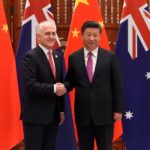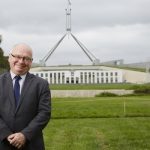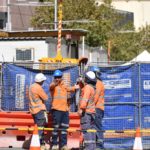How do we protect our future prosperity? A Vision for Australia
Australia is facing a host of serious but manageable challenges. As part of our “A Vision for Australia” consultation, Roger Beale says we need to develop the understanding of the community and be persistent, patient and fair.
After close to a quarter century of uninterrupted growth in incomes, wealth and the economy we face a new and difficult world.
The problems – decline in the price of iron and coal, low productivity growth, workforce growth that is totally dependent on continued migration, the ageing of the baby boomers, growing intergenerational disparities in wealth, unwillingness to address climate change, a riskier regional strategic outlook, a fragile budgetary position at federal and state levels and a creaky federation – are serious but manageable if we take measured sensible action.
The conundrum is that to do what is necessary will inevitably hurt some in the community – but there seems to be no community acknowledgement of the need to change or willingness to share the burden. The electorate has never been more fickle or politicians more prepared to amplify outrage for short-‐term gain. Politicians have chosen to attack rather than to lead. The death of ideology, the professionalization of politics, the clear self-‐interest of many politicians as they struggle for power and their willingness to make commitments that they know can’t be kept in order to win office has encouraged cynicism in the community.
Senior politicians across the parties broadly understand what needs to be done – but none can work out how to do it and retain (or gain) power.
We need community leaders to step into that gap. Not by shouting through the megaphone in pursuit of self-‐interest, but by working inclusively and respectfully across community groups. I, for one, am not convinced that business leaders have shown sufficient sensitivity in their calls for rapid and radical reform without explicitly recognising the need to maintain equity.
The first step is to build community understanding of the problems we face and the need for all to contribute. The second is to recognise that reform will be slow and require persistent effort.
Persistent effort is needed because these problems are not temporary.
After we exhausted the productivity gains that came from the microeconomic reforms of the late 80s to mid 90s, we were buoyed by the sustained Asian, and particularly Chinese, economic miracle. That miracle was built in part on a demographic dividend as birth rates dropped sharply, temporarily creating a burgeoning working age population with few dependents. As much as a third of Asian growth is likely to have come from this.
But China is now ageing and workforce and population will begin to decline by the end of the next decade. It is plausible that aging might reduce China’s growth potential by one to two percentage points each year, on top of the slower growth already targeted. China is not alone in facing an aging population – China and Australia’s dominant trading partners, the EU, East Asia, North America and Oceania are also aging. This could have a compounding effect on the impact on growth.
In part the Asian miracle was also built on an unsustainable degradation of the environment. Environmental quality – exemplified by catastrophic air pollution – has become a critical political issue in China and should be so in India. Every country in the region is affected by the pollution of these two super economies. China at least is acting – late but strongly. This is an important part of China’s embrace of lower growth targets and economic restructuring.
The consequences for Australia are clear – our minerals commodity exports will be hit with lower price and volume growth as Asian growth continues but focuses more on higher technology and knowledge industries and less on breakneck speed. We will continue to sell minerals, but prices will not return to boom times. We will continue to sell thermal coal, but with a more limited future as action on pollution and climate change increase and competition from gas and renewables intensifies. Private and government revenues will continue to be hit.
We need to build community understanding that the times when rising incomes and wealth could just be assumed are fading. Without sustained action to close the gap between government expenditures and revenues deficits will grow – and we will become more fragile in the face of any future financial shocks. We need to cut expenditure and probably raise taxes. If we have to raise taxes, it is important to do this in a way that does not further slow the economy – so tax reform becomes a high priority. We need to build productivity and workforce participation by women and older people. We need to maintain a public willingness to welcome a large migrant intake. And we need to recognise that there are real inequities in our tax, social welfare and retirement incomes strategies, and that resolving these will go some way to repairing the budget.
In the past governments have bought reform by overcompensating the losers and distributing the gains from reform before they are banked. That is no longer possible. We need a strategy that emphasises plain speaking on the problems, developing community understanding and a willingness to hasten slowly in building the necessary coalitions for change. We need to simplify and stage our reform agenda (for example radical reshaping of Federal/State responsibilities and finances is probably just too hard in the short term – but a staged approach to tax reform might not be) and be patient in rebuilding our government balance sheets.
Fairness is critical – there is no way that low and middle income Australia will vote to carry its share of the burden if it thinks that the rich or the corporate sector are shirking theirs.
Community thought leaders are going to be critical in building and broadening this conversation.
Roger Beale AO is a former senior Australian public servant and policymaker. Since retiring from the public service, he has continued to pursue work as an artist, having held exhibitions in galleries around Canberra since 1984. Mr Beale was made a Member of the Order of Australia for contribution to national economic reform in 1995 and an Officer of the Order in 2006.



